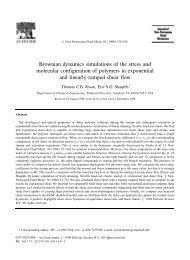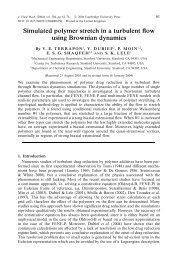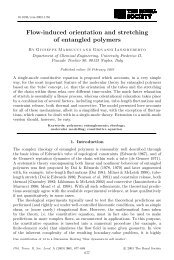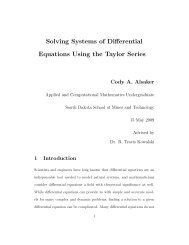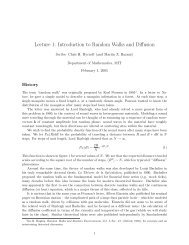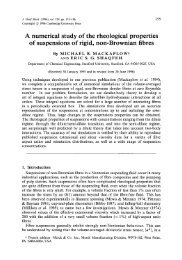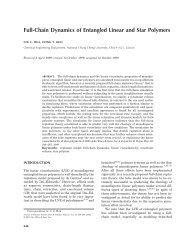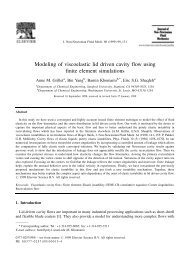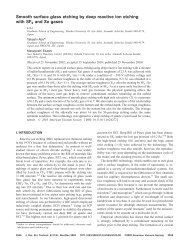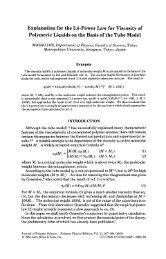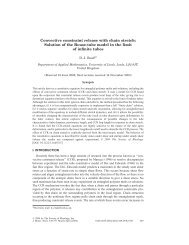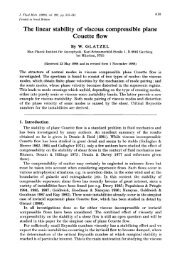Molecular modelling of entangled polymer fluids under flow The ...
Molecular modelling of entangled polymer fluids under flow The ...
Molecular modelling of entangled polymer fluids under flow The ...
You also want an ePaper? Increase the reach of your titles
YUMPU automatically turns print PDFs into web optimized ePapers that Google loves.
¡<br />
¡<br />
¡<br />
¡<br />
¡<br />
¡<br />
¡<br />
¡<br />
¡<br />
¡<br />
¡<br />
¡<br />
¡<br />
¡<br />
¡<br />
2.III. OBSTRUCTED DIFFUSION 45<br />
Milner et al. (2001) but the derivation was not included in their paper. <strong>The</strong> rescaled<br />
Rouse term (equation 2.51) is needed. Each point on the chain can be considered as<br />
Brownian particle in a series <strong>of</strong> obstacles which disappear and re-appear with frequency<br />
ν. <strong>The</strong> boxes are a distance a apart. It is assumed that after the removal <strong>of</strong> an obstacle<br />
the particle has time to fully equilibrate before the obstacle reappears. <strong>The</strong> particle<br />
experiences a force <strong>of</strong> F in the x direction at all points in space. Thus after a constraint<br />
ν<br />
F<br />
x<br />
a<br />
Figure 2.15: Schematic showing a Brownian particle, subject to a spring force and<br />
moving in an array <strong>of</strong> vanishing and re-appearing obstacles.<br />
is removed the probability <strong>of</strong> accepting the hop can be found by solving the zero flux<br />
Smoluchowski equation,<br />
k B T ∂Ψ<br />
∂x<br />
− FΨ = 0 (2.53)<br />
the solutions <strong>of</strong> which have a Boltzmann distribution<br />
( ) Fx<br />
Ψ(x) = A exp . (2.54)<br />
k B T<br />
When a constraint to the right <strong>of</strong> the particle is removed the particle is localised to the<br />
region 0...2a, hence the normalised solution for the probability density is<br />
where α =<br />
right is<br />
Ψ + (x) = e αx α<br />
e 2αa − 1 . (2.55)<br />
F<br />
k B T<br />
. Consequently, the probability that the particle accepts the hop to the<br />
P + (a) =<br />
=<br />
∫ 2a<br />
Ψ + (x)dx<br />
a<br />
(2.56)<br />
1<br />
1 + e −αa .



